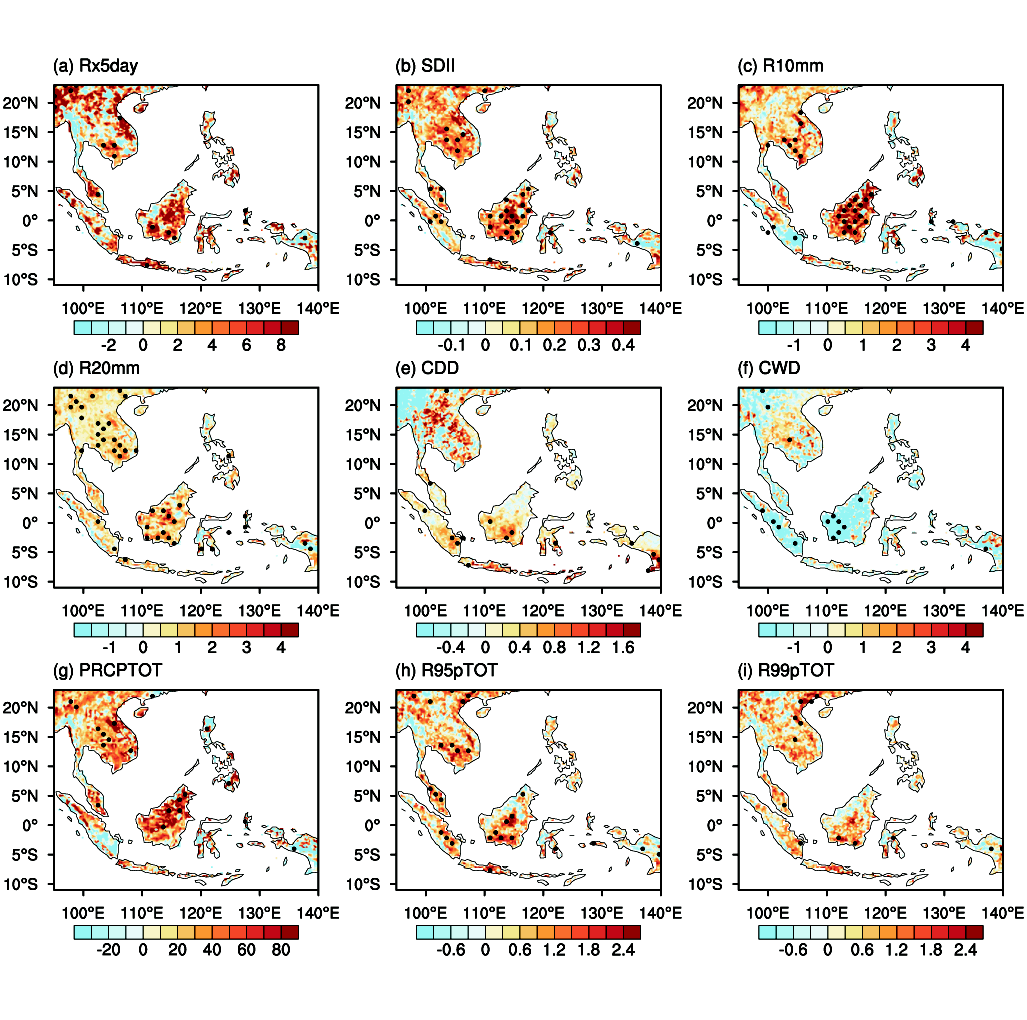Dr GeFei from atmospheric sciences published a top journal articles reported the global heating 1.5 ° C and 2 ° C for the influence of the changes in extreme precipitation in southeast Asia
In December 2015 ,Climate Conference in Paris(COP 21) through《 the Paris agreement》, clearly put forward to control the global average temperature rise from pre-industrial within 2 ℃, and strive to be limited to 1.5 ° C. In October 2018, the intergovernmental panel on climate change (IPCC) has released the 1.5 ° C project of global warming, it is pointed out in the report that limit global warming amplitude can reduce the risk of extreme weather events in different regions.
Recently, Dr. Ge fei from the school of atmospheric sciences of our university cooperated with experts from nanjing university of information technology, Max Planck institute for meteorology in Germany, Hamburg university, published a academic paper in the international Top journal Environmental Research Letters in the field of geoscience (SCI journal division of Chinese academy of sciences: major disciplines – geoscience 2 area; IF published = 4.541) called “Risks of precipitation extremes over Southeast Asia: does 1.5 ° C or 2 ° C global warming make a difference?” The academic papers reported that the global heating 1.5 ° C and 2 ° C for the influence of the changes in extreme precipitation in southeast Asia.
The study use six models of CORDEX SEA and CORDEX EAS (12 groups of RCP test) respectively forecasts the change trend of extreme precipitation in southeast Asia under 1.5 ° C and 2 ° C heating conditions, found that extreme precipitation in the region under the two kinds of heating threshold were significantly enhanced, and the intensity and frequency of extreme precipitation in 2 ° C heating threshold significantly higher than the 1.5 ° C. At the same time, the article also systematically assessed the risk of serious climate that the region under the different heating threshold may face , explicitly pointed out the importance of limiting heating rate to 1.5 ° C. During the review, the paper was highly praised by two anonymous reviewers and the editorial department, and the research results were considered as “(The paper fills an important gap in the assessment of regional climate change)”. The research results help deepen the understanding of the regular of climate change in tropical areas, and also provide important scientific reference for the in-depth promotion of China’s “One Belt And One Road” initiative.
Paper information:
F. Ge, S. Zhu, T. Peng, Y. Zhao, F. Sielmann, K. Fraedrich, X. Zhi, X. Liu, W. Tang, L. Ji. 2019: Risks of precipitation extremes over Southeast Asia: does 1.5 °C or 2 °C global warming make a difference?
https://doi.org/10.1088/1748-9326/aaff7e

Figure 1. Boxplot of projected changes in percentage of precipitation extreme indices averaged over Southeast Asia (land only) for the 1.5 (blue) and 2.0 (red) °C GWLs relative to 1976-2005.

Figure 2. Difference between the ensemble median changes in precipitation extreme indices at the 2.0 and 1.5 °C GWL. The black dots indicate statistically significant at the 95% confidence level. All SNRs are greater than 1 over the area.
